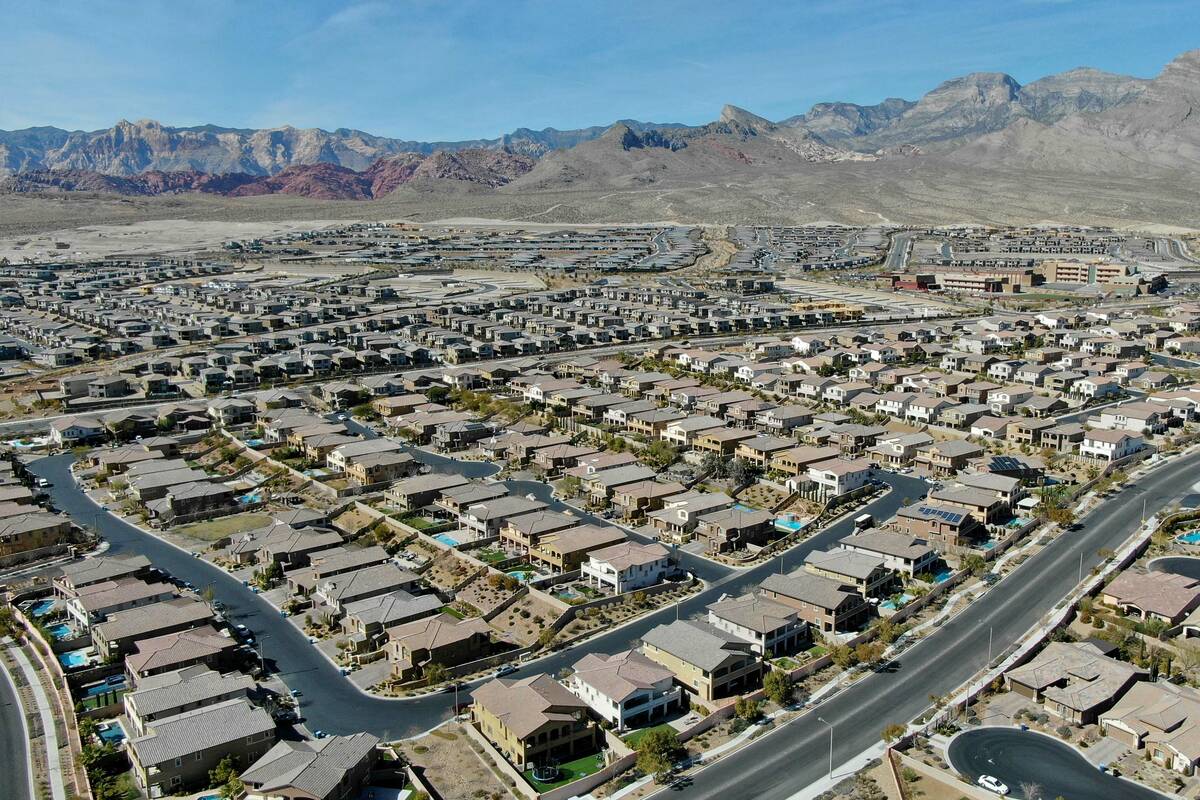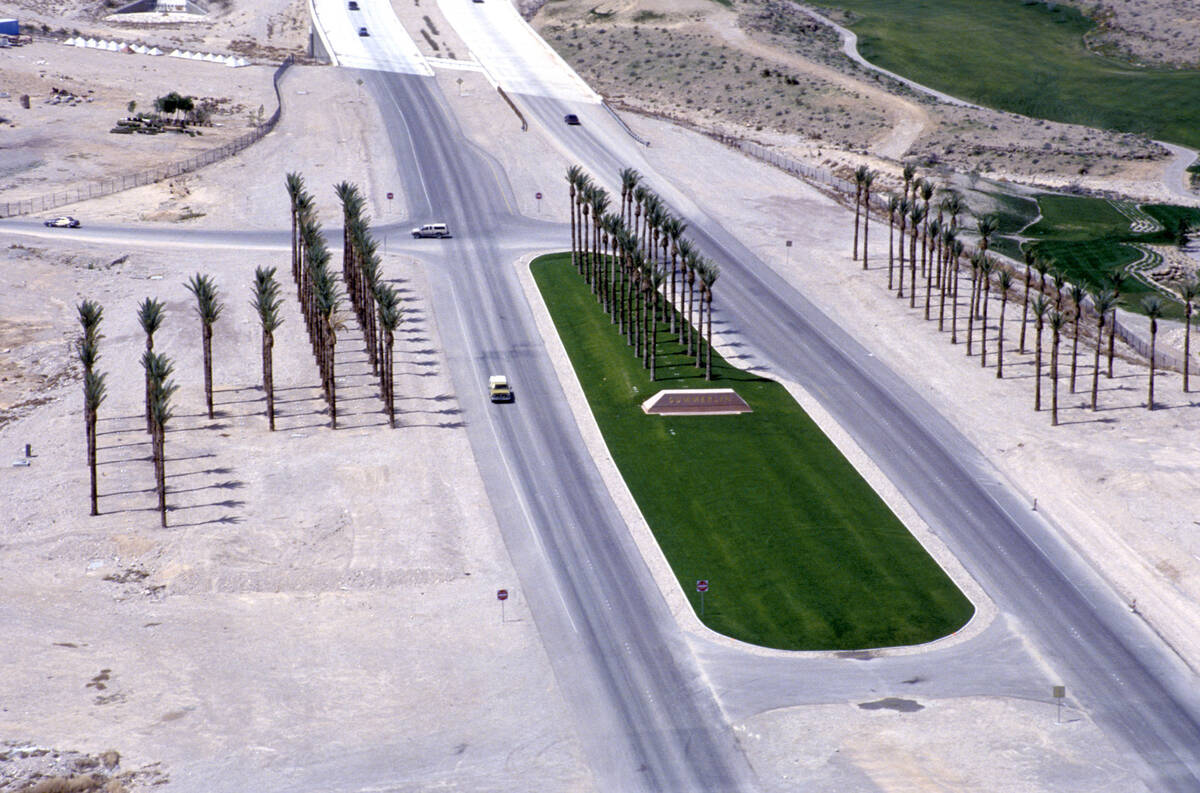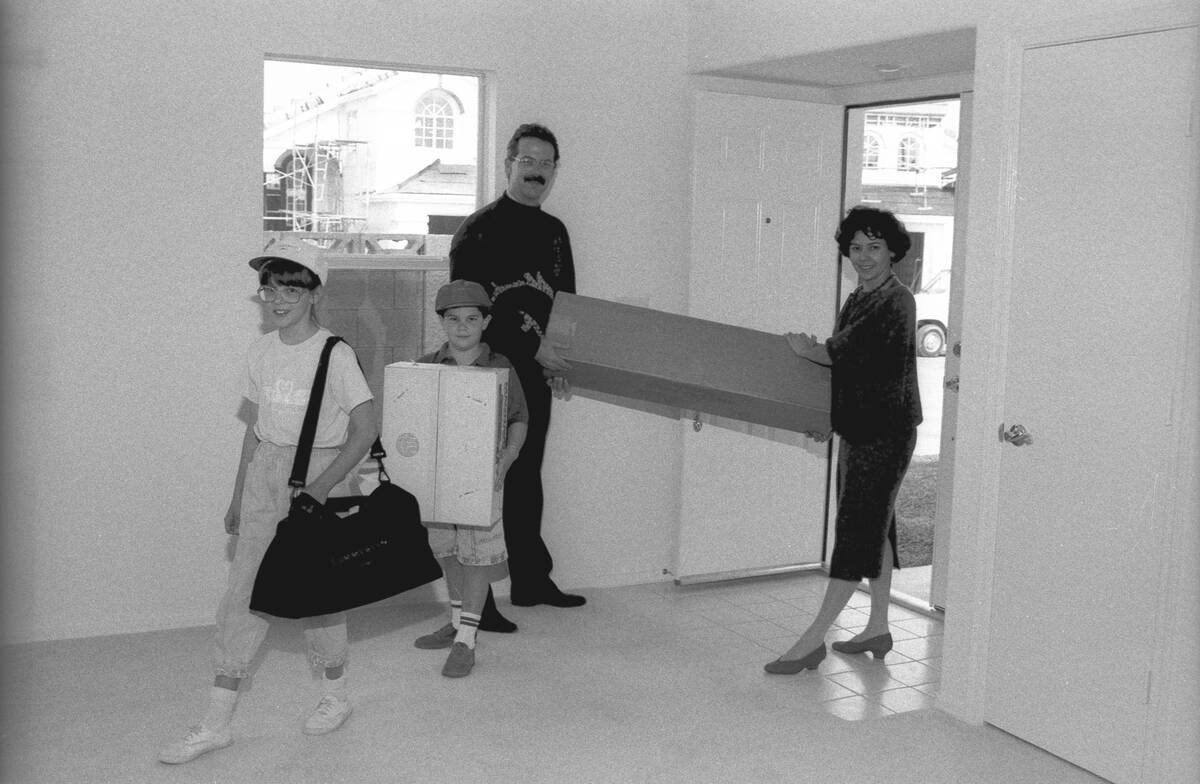What is the real history of Summerlin? Developer unveils archives
Named after late American business tycoon Howard Hughes’ paternal grandmother Jean Amelia Summerlin, the master-planned community’s history is one filled with unique stories, figures and little-known facts about the area.
Howard Hughes Corp. executives recently allowed the Las Vegas Review-Journal an exclusive peak into the archives — and archival photos — to tell the tale of the West Las Vegas community of Summerlin, one of the country’s bestselling master-planned communities.
In 1952, Howard Robard Hughes Jr. bought a 30,000-acre parcel along the then-barren western rim of the Las Vegas Valley for $3 an acre — a residential acre there is now valued at $1.27 million, according to Howard Hughes’ 2022 fourth-quarter report — reportedly as a possible relocation for his California-based business concerns. Hughes chose not to relocate his businesses and build there, so the land sat dormant for decades.
The reclusive billionaire also bought the nearby Spring Mountain Ranch, close to the sandstone cliffs of Red Rock Canyon. A hideout for outlaws and cattle rustlers on the Old Spanish Trail, the ranch is today part of Nevada state parkland.
Widely known as an introvert, Hughes became increasingly reclusive after 1950 and did most of his operating through managers who rarely saw him in person, buying up large tracts of real estate in California, Arizona and Nevada that skyrocketed in value. In 1967, he became involved in the Nevada gambling industry when he purchased the famous Desert Inn Hotel on the Las Vegas Strip.
Nevada gaming authorities welcomed Hughes’ involvement, according to historical articles, because it counteracted the image that the Mafia dominated the gambling industry in the city. By the early 1970s, Hughes had become the largest single landholder in Nevada. He also was the state’s largest employer at the time, with 8,000 Nevada residents on his payroll.
During the 1980s, Las Vegas was ramping up for what would be an unprecedented growth spurt both on the Strip and in the outlying areas. Green Valley was thriving as the city’s first modern master-planned community southeast of the Strip, and the plans were being made for mega-resorts the likes of which the city had not yet seen, a building boom that kicked off in 1989 when Steve Wynn built The Mirage.
The corporation formed by Hughes’ heirs, the Summa Corporation renamed itself The Howard Hughes Corp. in 1994. It sold two years later to the Rouse Company and then was acquired by General Growth Properties in 2004. GGP filed for bankruptcy in 2009, resulting in The Howard Hughes Corp. reforming as a spin-off company. Just recently, the company announced the formation of a holding company structure, making Howard Hughes Holdings Inc. the parent holding company of The Howard Hughes Corp.
Getting started
The Hughes organization put together a team of the nation’s leading planning consultants in the mid-1980s to “explore the feasibility and lay the foundation for a colossal master-planned community,” according to the company. In 1988, the company announced Summerlin, and that year before the shovels hit the ground, an important act took place in preparation.
“It was a land exchange with the Bureau of Land Management facilitated by The Nature Conservancy in which Summa Corporation gave up 5,000 acres of environmentally sensitive land in exchange for 3,000 acres more appropriate for development,” said Julie Cleaver, senior vice president for commercial and residential planning for Summerlin at Howard Hughes.
“This critically acclaimed exchange helped (the Howard Hughes Corp.) establish credibility with the environmental community,” she said. “It established a boundary for the community and paved the way for the conservation area that creates a buffer and forever protects Red Rock Canyon, a national geographic treasure and the most spectacular scenery in Southern Nevada.”
The company also donated land to the Meadows School, the valley’s top private college preparatory school, which moved to a 40-acre campus on Scholar Lane in 1988. The land was donated by the Howard Hughes Corp. and students in kindergarten through fifth grade studied in the Dr. LeOre Cobbley Lower School, the first building erected in Summerlin. Classrooms for the older students were housed in the prefabricated buildings trucked over from the original campus.
“This generous and strategic move helps to put the community on the map for many of the city’s founding families and influencers whose children attended the school,” said Danielle Bisterfeldt, senior vice president of marketing and consumer experience for Summerlin at Howard Hughes. “The school opened in 1988, three years before the first families moved to Summerlin, and while the development of Summerlin officially commenced in 1990 and the first residents moved into the community in March 1991, initial planning took more than three years.”
Initially, to help fund the development and construction of Summerlin, the company sold approximately 2,500 of the community’s 30,000 acres to Del Webb Communities Inc. The result was Sun City Summerlin, a “golf course-oriented, active adult community” that is today home to more than 12,000 residents. Sun City launched development a year before Summerlin and was completed in 1999.
Cleaver said there was also the issue that Summerlin fell within two jurisdictions — the city of Las Vegas and Clark County.
“We partnered with the city to create a new ordinance for planned community zoning, establishing a unique process in which the company helps to write its own development engineering standards and land-use categories that are approved by the city of Las Vegas. Similarly, we worked with Clark County to establish a major projects team process to facilitate and expedite approvals.”
Building roads, connections
One of the key hurdles in the early days of Summerlin was access to the site, which in the late 1980s, was considered remote by Las Vegans, Cleaver said. To ensure Summerlin’s marketability and viability, she said, it was essential to build an attractively landscaped and efficient roadway to the community’s front door.
Summerlin Parkway, along with other utilities and roads, was funded by three Special Improvement Districts created through bonds issued by the city of Las Vegas. This inexpensive source of funding for infrastructure construction allowed the company to create an exceptional community from the beginning by freeing up funds for amenities and landscaping, the organization said. This was the first-ever private sector application of a new SID in Nevada and paved the way for other developers to secure similar public financing.
In 1990, Summerlin Parkway was completed, running from Rainbow Boulevard to Town Center Drive, connecting to U.S. Highway 95, the major arterial that connects Boulder City, Henderson and downtown Las Vegas to the west side of the Las Vegas Valley. The 4-mile-long parkway, which was originally dubbed by locals as “the road to nowhere,” was Southern Nevada’s first ever three-level interchange.
The Summa Corporation spent $22 million on the parkway’s interchange, roadway, lighting and landscaping features.
The Howard Hughes Corp. also donated 520 acres of right-of-way space to Clark County in 2001 and offered excavation services valued at nearly $60 million for the construction of the 215 Beltway where it runs through Summerlin. The gift accelerated development of the 215 Beltway and included 8 miles of right-of-way for a regional trail system.
“The company also designed and funded artistic petroglyphlike enhancements to overpasses in Summerlin,” Cleaver said. “These designs, which were taken from original rock art located within Red Rock Canyon, have not only added visual interest to beltway overpasses, they honor local Native American cultures.”
That same year, in 1990, development of Summerlin officially commenced with The Hills, the community’s first village. Summerlin now contains more than 20 completed villages with a number of districts under active development. The Howard Hughes Corp. actually completed The Hills’ first park months before the first residents moved it to give the area’s inhabitants a place to go and help sell more homes.
The community now has roughly 123,000 residents within its 35 square miles, with 4,500 acres left to develop which the developer expects will take another two decades.
Contact Patrick Blennerhassett at pblennerhassett@reviewjournal.com.























